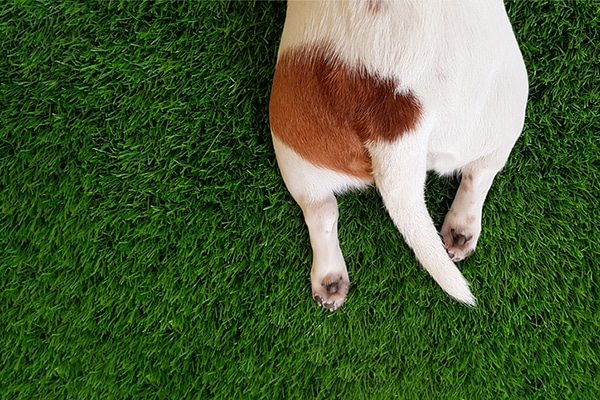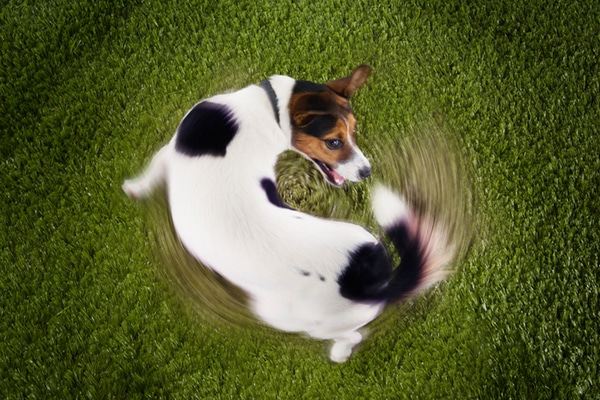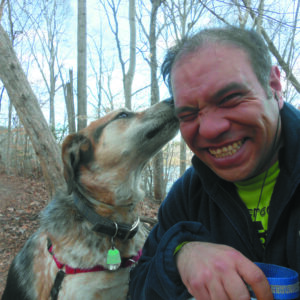Since dogs cannot talk, they cannot make their needs or desires plain to us in any simple or intelligible way. It’s easy to get frustrated when our dogs engage in behaviors that are repetitive, troubling or destructive. We all take some degree of pleasure, on the other hand, when we see a dog chasing her tail. When an occasional canine tail chase turns into a habit, though, and when that habit ends in tail biting or tail chewing, it can signal a range of potential issues.
What’s even more troubling is the sheer volume of people who not only ask, “Why is my dog chewing his tail raw?” but also end that question with “for no reason?” Just because we cannot immediately isolate the source of the odd behavior doesn’t mean that it is purposeless or without foundation. Obsessive or compulsive canine behaviors, like chasing and gnawing at the tail, always have a root cause.

The most common causes why do dogs bite their tails
- Parasites: fleas, ticks, or worms
- Environmental and skin allergies
- Hot spots and other secondary infections
- Stress, boredom, or confinement
- Injury
- Impacted anal glands
Let’s take a closer look at each of these problems below.
1. Parasitic infestations
Fleas and ticks are common enough seasonal afflictions for dogs. We’ve all seen a dog scratch at a spot on his body where fleas are bouncing around or a tick has attached itself. With medicated collars, regular baths, and prescriptions, these pests are fairly easy to treat. In the same way that humans are allergic to the saliva of cats or dogs, so too are some dogs allergic, not to the presence of ticks and fleas, but to the saliva in their bites.
A dog with an undiagnosed flea allergy may be biting repeatedly at the site of an allergic reaction until they break their own skin to find relief. Tapeworms can also cause such physical discomfort in the area surrounding the anus that a dog feels compelled to gnaw at the base of her tail. Ultimately, it’s the pain she’s causing herself by constant chewing that leads her to whine as well.
2. Allergies
Inflammation of the skin, or dermatitis, caused by fleas and ticks is not the only allergy that can lead a dog to chew at her tail. Environmental allergies — anything from pollen outside to household chemicals inside — can give rise to allergic reactions. Whether the source of your dog’s allergy is mites, mold or contact with other animals, the reactions are most severe in a dog’s early years, between 3 months and 6 years old.
A human’s first instinct to a skin allergy is to scratch at it, and it’s the same for a dog. Interestingly, trying to treat one allergy can lead to the discovery of a different one. If your dog has sensitive skin, something as simple as the shampoos or soaps you use to bathe her can also spur an allergic response.
3. Hot spots
A hot spot is an area on a dog’s body where repeated scratching or chewing leads to the creation of an open wound. Warmth and moisture are the optimal conditions for hot spots to form. Should a stray bacteria find its way to the site before it is properly treated, a secondary infection is a typical result. Recognize a hot spot by the presence of blood, pus, and matted hair.
If your puppy or dog is biting tail so frequently that she draws blood, then secondary infections are not the root cause of her problem, only another symptom. A veterinarian can help you determine whether the true reason has to do with hygiene, nutrition, or another factor.
4. Stress and anxiety
Stress, anxiety and boredom can lead dogs into a host of destructive and repetitive behaviors: tearing up your favorite shoes, your most comfortable couch pillows, and so on. Out of necessity, some people crate their dogs when they leave for the day. If dogs spend too much time confined, they may turn their attentions inward and seek relief where they can.
The same applies to dogs who do not get sufficient exercise, interactive play or mental stimulation. Some people may think a dog turns to self-destructive activities like tail biting as ways to get attention, and in these cases, who can blame them?
5. Injury
Any kind of rear or hindquarters injury — a broken or fractured tail bone, for instance — is something a dog cannot inform his owner of, and may go unnoticed under normal circumstances. The intensity of the dog’s pain may lead her to act on or draw attention to it by excessive chewing, biting, or licking at the affected area. Only veterinary X-rays will be able to properly diagnose such an issue.

6. Impacted anal glands
Finally, another common reason why a dog may be biting at the base of her tail until it’s bleeding is an impacted anal gland. A dog’s anal glands are as important to a dog as our hands are to us, and, socially, they fill similar needs. Just as we shake hands when we meet folks, canine anal glands secrete interesting fluids that dogs smell when they meet each other. This is one reason why dogs are so intent on sniffing at each other’s rear ends at any opportunity.
One obvious sign that a dog is having an anal gland issue is scooting, when he sits up and drags his butt across the ground. Other symptoms include a fouler-than-normal smell originating from a dog’s behind, trouble defecating (you call it constipation), and, in severe cases, blood or pus in the feces.
How have you been dealing with your dog tail biting?
As you can tell, dogs who are giving a lot of attention to chewing their tails — particularly the base of the tail — may be afflicted with a wide variety of problems. Really, it’s quite a rich tapestry of causes that can lead to compulsive tail biting.
But, good news! Whether it’s practicing better hygiene with your dogs, discovering whether they are allergic to some thing or creature around the home, addressing small wounds before they develop secondary infections or simply making sure they get out more, all of these issues are treatable.
Tell us: Have you ever had a puppy or a dog who seemed to fixate on her tail area? Were you or your veterinarian able to isolate the key problem and address it successfully? Share your experiences with dog tail biting in the comments!
Read more about dog behavior on Dogster.com:
- 5 Rainy Day Ideas to Keep Dogs Active Indoors
- How to Prevent Dog Bites
- Everything You Wanted to Know About Dog Penis Behavior
About the author: Melvin Peña trained as a scholar and teacher of 18th-century British literature before turning his research and writing skills to puppies and kittens. He enjoys making art, hiking, and concert-going, as well as dazzling crowds with operatic karaoke performances. He has a one-year-old female Bluetick Coonhound mix named Idris, and his online life is conveniently encapsulated here.
Featured Image Credit: Photography ©Mike Watson Images | Thinkstock.






